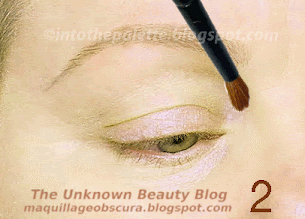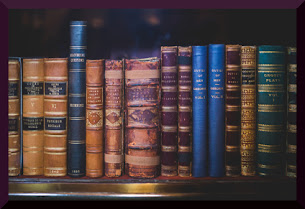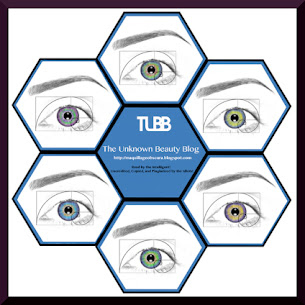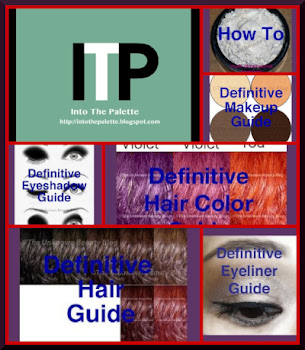I couldn't come up with a clever title as you can see. I have been putting this post off for a long time. Okay, since I began my blog, I thought maybe save it for a makeup book that I would never write. In other words, all the info would just sit in my head until a mind reader came along and extracted it.
Being part Asian and part alien I found it easier to understand makeup techniques for the alien side of me like highlighting and contouring, applying lipstick and blush, powdering the face, etc. But when it came to eyeshadow application, I wanted to understand my Asian eyes. And to make matters more different, my aging Asian eyes!
I find many eyeshadow application techniques usually start out as the usual the lid, brow bone, and crease. That is a great explanation if all that is easy to find on the eye especially the crease. With some patience, practice, and help; I found that Asian eyes are really no different from Caucasian eyes. It is just supplying an explanation and description that makes it hard. Understanding the bone structure of the eye area makes it easier. Everyone has a crease but for some it is hidden due to how the muscle (obicularis oculi) sits within the orbital bone. You won't get Anatomy 101 on the eye area from me but I won't say it will be really simple to understand, but once you do, eyeshadow application is a breeze. Also, this pertains to all eyes no matter what ethnicity. I just use the comparison of Asian and Caucasian to simplify.
Here is a picture of two female skulls, the one on the left is Asian and the right is Caucasian. You can see that the nasal bone (bridge) is different but the highlighting and contouring is the same. The biggest difference is the eye area. You can't really see it but the small difference makes the biggest difference when it comes to Asian eyes. The red arrows point to the area that is like a "hinge" of the eye. From the front the line of the crease falls into it. For Asians, that is the area that appears to stretch the eye. This little part can change the eye dramatically. Okay, maybe not the magical dramatic but more of an "aha" type of dramatic. (More in a future post!) Feel that area, it is like a dent. As you turn your head it is more like a " > ". That is the area where the eye and crease corner meet. Asians you have the same but the dent is smaller, way smaller. Asian monolids, you have it too. Feel that area and remember it! (I know I am repeating myself!)
In the next picture, I enhanced the eye area of both skulls more by bringing up the contrast and changing it to black and white. You can see that area (marked with red) is deeper and bigger on the Caucasian skull and on the Asian one it is small and flatter but it is still apparent . This area is like, I mentioned before, the hinge of the eye, well one of the hinges, the other is the tear duct area. The depth of the hinge gives the crease. I superimposed my eye on the Asian one (didn't work out to well!) and superimposed another eye over the Caucasian one. Not exact but you see how the eye would sit. There would be muscle mass to take into consideration so not perfect but you get the idea.
In my post on highlighting and contouring, I mentioned the corners of the face. The corners are important because they connect the front to the sides and vice versa. It is the area that creates depth, you may not see it in real life but in a photo it helps. The eye area is the same also, and that area can create shape and depth which is important in a media that renders only in two dimension.
The planes of the eye is a bit more complicated than the entire face since it is a smaller area. It can get difficult to understand but just look and read and it will sink into your brain like osmosis. Taking the same skull picture and showing only the orbital area, I have colored the "hinge" area in yellow and the corner of the eye in white. In the Caucasian orbital structure, the hinge is deeper making the depth of the crease deeper. Asians the hinge is more narrow making the eye look more elongated. (You notice how I mention this so many times.) Now think of that hinge as the side of the eye. Now look at the area I colored in white, that is the corner of the eye. On Asians, that area appears more to the side since the eye is elongated. On Caucasians, that area appears higher which it is due to the angle of the bone.
Feel the hinge area with your finger or take a brush, follow that and it will curve upward (that is the corner and it is also the area that arches your brow.) You will also notice that the orbital bone domes into the eyeball (fleshy) area (it has been sculpted to curve into the hollow). Asians may have a tough time finding the differentiation between the corner and the hinge because they are both so small but they are there, you will feel the eye bone curve upward; it may be small but it will turn into the corner of your eye. As soon as your finger or brush stops curving, that becomes the front plane of your eye.
Are you confused? Well, don't be. Just close your eyes and feel your orbital bone. Don't think of any words, just feel with your fingers or feel how the brush curves. The previous explanation pertains to ALL EYE SHAPES NO MATTER WHAT YOUR AGE. If you are a mature woman like me, don't be afraid to lift the skin a little to feel the shape. Hooded eyes, you still have the same shape. Just study the shape of the eye because in a future post, application techniques will be discussed no matter what your eye shape and ethnicity!
*special thanks to sixxmum for supplying the other eye ;-)
















